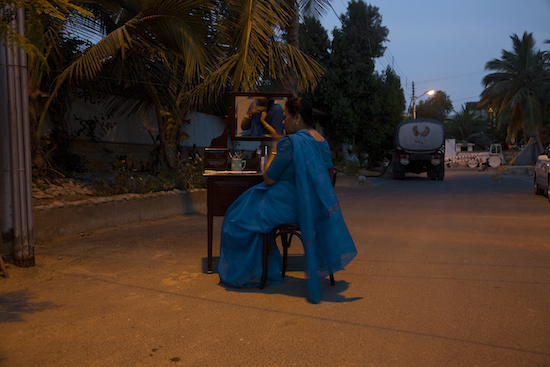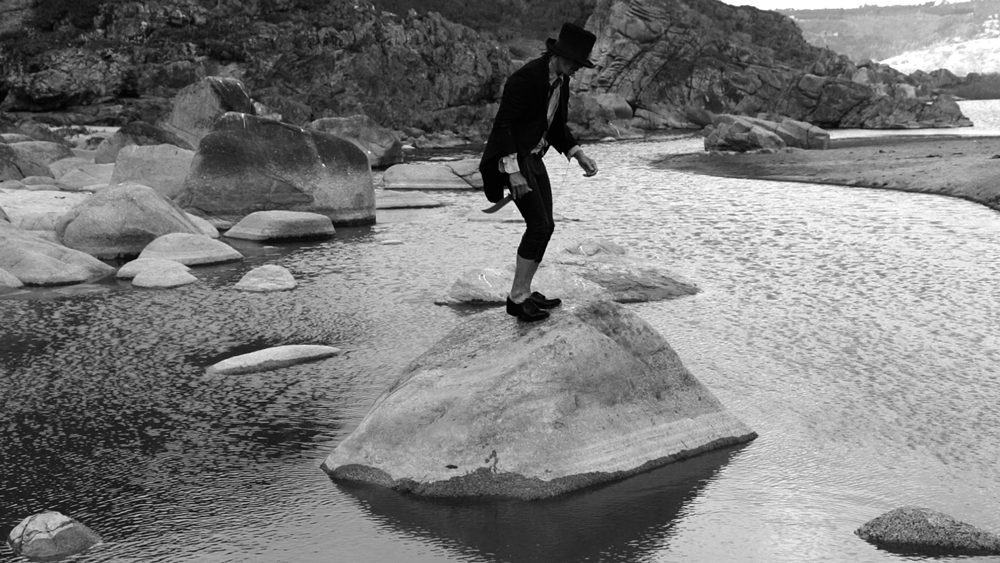¿Quién medirá el espacio, quién me dirá el momento?, 1 (columna alfarero)
2015 - Sculpture (Sculpture)
430 cm
Mariana Castillo Deball
Taking archaeology as her departure point to examine the trajectories of replicated and displaced objects, “Who will measure the space, who will tell me the time?” was produced in Oaxaca for her exhibition of the same title at the Contemporary Museum of Oaxaca (MACO) in 2015. The sculpture, employing the technique of traditional Atzompa pottery originating from Oaxaca, Mexico, is an examination of the way in which archaeological heritage is remembered in the earthenware made by Atzompa potters today. Accompanied by the publication ‘Ixiptla Vol. 3’, the edition examines imposed meaning on replications in the form of the plaster molds, photographs, drawings, scale models and facsimiles made by archaeologists in the effort for conserving lost objects. The artist’s selection of shapes and forms reference her research in the permanent collection held at Rufino Tamayo Museum and is the basis for imagining a series of stories relating to Atzompa history. In that sense, the columns contain fictitious or historical figures, weaving together an intricate network in which they coincide in space and converse in time (snake, pochote and ceiba – a subtropical tree, warriors, mother earth or pottery are just a few examples). “Who will measure the space, who will tell me the time?” is a sculptural exquisite corpse, a form of an infinite column that offers a temporal space for interpretation and reflection.
The practice of Mariana Castillo Deball (b. Mexico City, 1975) is centered on intensive research. In weaving together perceived facts and legends, the artist deconstructs how we understand tradition, liberating content from imposed ideological legacies. Mariana Castillo Deball’s collaborative research—in particular in the domain of science, geology, archaeology and literature—is manifested and synthesized into her multimodal sculptural practice. The archive is a significant aspect of the artist’s practice, whereby the research conducted in the creation of her sculptures is culminated, catalogued and preserved. Deball is not only interested in traces of the past, her multidisciplinary approach allows her to study the different ways in which a historical object can be read today.
Colors:
Related works featuring themes of: » Artist as Ethnographer, » Collecting and Modes of Display, » Collective History, » Contemporary Archaeological, » Mexican

© » KADIST
Bani Abidi
2008The threshold in contemporary Pakistan between the security of private life and the increasingly violent and unpredictable public sphere is represented in Abidi’s 2009 series Karachi ...

© » KADIST
Bani Abidi
2012The perceived effortlessness of power, projecting above experiences of labored subordination is examined in Death at a 30 Degree Angle by Bani Abidi, which funnels this projection of image through the studio of Ram Sutar, renowned in India for his monumental statues of political figures, generally from the post-independence generation...

© » KADIST
Mario Garcia Torres
2004Mario Garcia Torres imagines cinematic devices to replay stories occasionally forgotten by Conceptual art...

© » KADIST
Mario Garcia Torres
2005Mario Garcia Torres films a game of Charades among professional actors guessing the former North Korean dictator’s favorite Hollywood films...

© » KADIST
Erick Beltran
2010In his posters, prints, and installations, Erick Beltrán employs the language and tools of graphic design, linguistics, typography, and variations in alphabetical forms across cultures; he is specifically interested in how language and meaning form structures that can be misconstrued as universal...

© » KADIST
Harrell Fletcher
2005The American War , which takes its title from the Vietnamese term for what Americans call the Vietnam War, has toured the United States extensively with the goal of presenting a Vietnamese perspective of that history...

© » KADIST
Fabiola Torres-Alzaga
2013Fabiola Torres-Alzaga plays with magic, illusion, and sleight-of-hand, fabricating installations, drawings, and films that toy with our perceptions...

© » KADIST
Charwei Tsai
2008Charwai Tsai’s photograph documents her Hermit Crab Project installation upon the construction site of gallery Sora in Tokyo...

© » KADIST
Pablo Rasgado
2011Pablo Rasgado’s paintings and installations serve as a visual record of contemporary urban human behavior...

© » KADIST
Diego Rivera
1940In 1940 Rivera came to San Francisco for what would be his last mural project in the city, Pan-American Unity ...

© » KADIST
Minerva Cuevas
2006During her research on primitive currencies and cultural cannibalism, Cuevas came across the Donald Duck comic book issue “The Stone Money Mystery,” where Donald goes on a quest to find missing museum objects...

© » KADIST
Adrian Villar Rojas
2012Based on historical prophecies and fantasy, the artist creates apocalyptic scenarios that posit an enigmatic world plagued by social, political, and environmental upheaval...

© » KADIST
Carlos Amorales
2006This work, a large oil painting on canvas, shows a moment from Amorales’s eight-minute two-channel video projection Useless Wonder (2006)...

© » KADIST
Jonathan Hernández
2008In line with Hernández’s interest in catastrophe, Vulnerabilia (choques) is a collection of images of shipwrecks and Vulnerabilia (naufragios) collects scenes of car crashes...

© » KADIST
Mario Garcia Torres
2010In Up All Night, Waiting for the Chelsea Hotel Magic to Spark My Creativity Mario García Torres constructs and documents a hypothetical scene, situating himself within a lineage of artists and creatives that used to congregate at the historic hotel...

© » KADIST
Mario Garcia Torres
Mario Garcia Torres discovered the work of artist Oscar Neuestern in an article published in ARTnews in 1969...

© » KADIST
Carlos Amorales
2014Carlos Amorales, based in Mexico City, works in many media and combinations thereof, including video, drawing, painting, photography, installation, animation, and performance...



